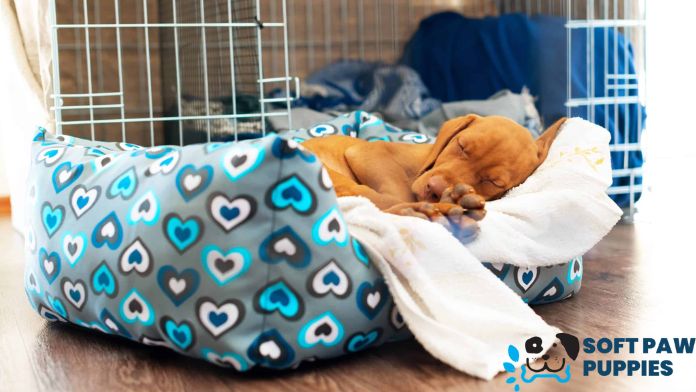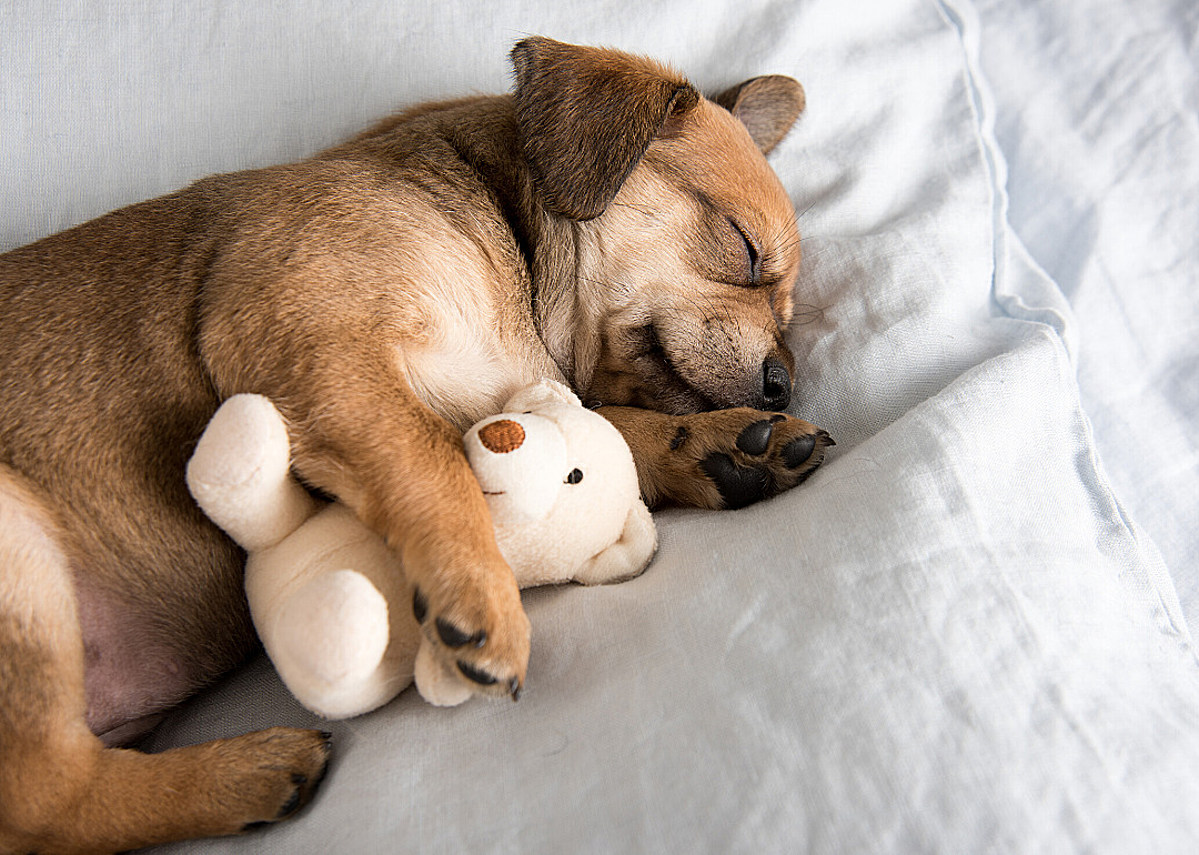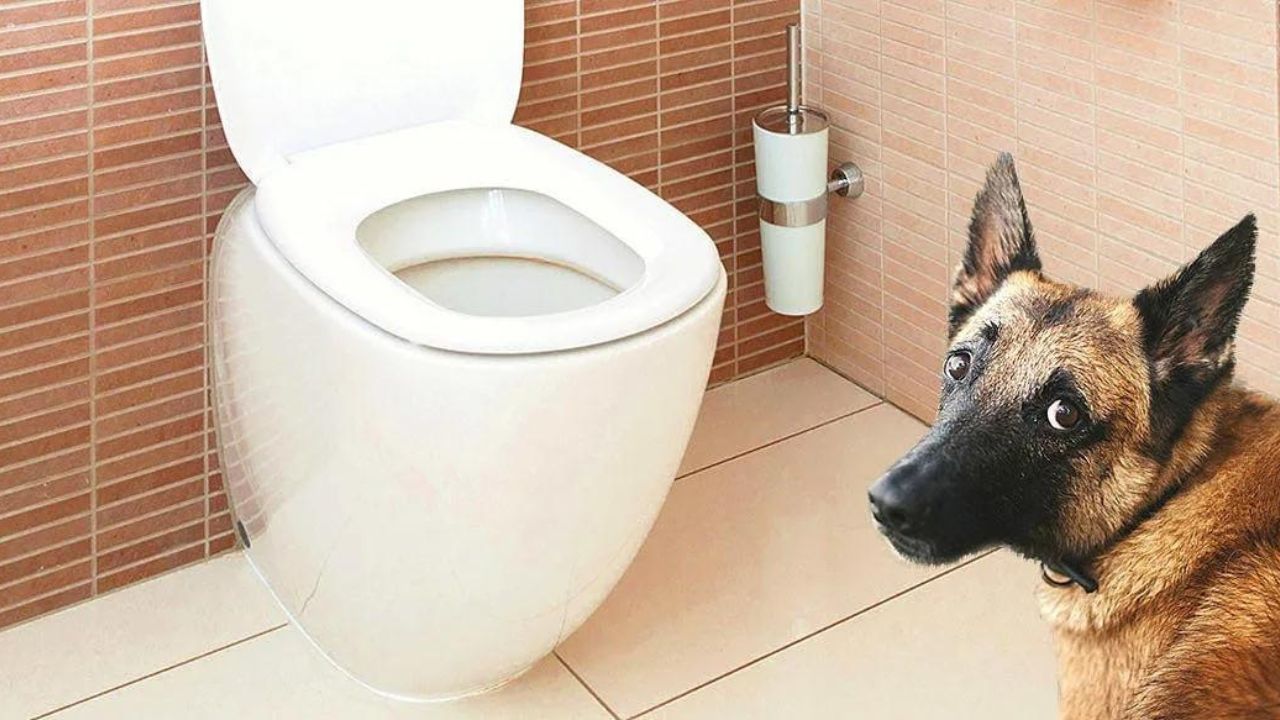
Welcoming a new puppy into your house is an exciting and wonderful event. However, as any pet owner knows, the first night can be difficult. One of the most important decisions you’ll have to make is where you want to reside. Your puppy will sleep on its first night in its new environment. This decision is important because it sets the tone for its sleeping routine and can greatly impact its comfort, security, and overall adjustment to its new home.
In this blog post, we’ll explore various options for where a puppy should sleep on their first night. We’ll discuss the importance of creating a comfortable and safe sleeping environment and consider different sleeping arrangements, such as having the puppy sleep in the same room, allowing them to sleep in your bed, or providing a separate sleeping area. We’ll also provide valuable tips to ensure a smooth first night for you and your furry friend.
You will be better prepared to make an appropriate decision for the situation. Needs of your puppy while also fitting into your lifestyle. So, let’s plan the ideal sleeping arrangement for your dog on its amazing first night in its new home.
Creating a Comfortable and Safe Sleeping Environment

Creating a comfortable and safe sleeping environment is essential before deciding where your puppy should sleep on their first night. Here are some factors to consider:
Choosing The Right Location In The House
Select a quiet area: Find a spot in your home away from high-traffic areas, loud noises, and distractions. This will help create a calm and peaceful sleeping environment for your puppy.
Consider proximity: Decide whether you want your puppy to sleep in the same room as you or in a different place. This will be determined by your personal preferences as well as the demands of your dog.
Ensuring A Quiet And Secure Space
Puppy-proof the area: Remove any potential hazards, such as electrical cords, toxic plants, or small objects your puppy could chew on or swallow.
Provide a secure enclosure: If you choose to use a crate or playpen, make sure it is properly sized, well-ventilated, and has a comfortable bedding area. The enclosure should be escape-proof to prevent accidents or wandering at night.
Providing A Cozy Bed Or Crate
Choose a suitable bed: Select a bed appropriate for your puppy’s size and breed. Opt for a soft and washable bed that cushions and supports their growing body.
Consider a crate: Crates can offer a safe and den-like space for your puppy to sleep. Ensure the crate is properly sized, comfortable, and associated with positive experiences through training and gradual acclimation.
Creating a comfortable and safe sleeping environment sets the foundation for your puppy’s good night’s sleep. Consider their size, breed, and individual preferences when choosing a location and bedding option. In the next section, we’ll discuss the options for the first night, including sleeping in the same room as the puppy, allowing them to sleep in your bed, or providing a separate sleeping area.
Considering Different Options for the First Night

When deciding where your puppy should sleep on their first night, several options exist. Each option has its advantages and considerations. Let’s explore the different possibilities:
Sleeping In The Same Room As The Puppy
Benefits of proximity and reassurance: Having your puppy sleep in the same room as you can provide protection and comfort, especially during their first night away from their littermates.
Using a crate or a designated area: Set up a crate or a designated space within the room where your puppy can sleep. This helps establish boundaries and gives them a safe, den-like environment.
Gradually Transitioning To A Separate Sleeping Area
If you eventually want your puppy to sleep, you can gradually shift its sleeping location to a different part of the house. This change should be made gradually to avoid separation anxiety.
Allowing The Puppy To Sleep In Your Bed
Pros and cons of co-sleeping: Sharing your bed with your puppy can create a strong bond and provide immediate comfort. However, if boundaries are not established, it’s important to consider potential challenges, such as disrupted sleep and potential behavior issues.
Establishing boundaries and rules: If you allow your puppy in bed, establish clear rules. Use positive reinforcement to teach them where to sleep and respect their personal space.
Ensuring comfort and safety for the puppy and yourself: Make sure your bed is safe and comfortable, with appropriate bedding and no risks of falling or injury. Also, consider any allergies or discomfort you may experience from sharing your bed.
Providing A Separate Sleeping Area
Setting up a puppy-proofed space: Designate a separate area in your home for your puppy’s sleeping needs. Puppy-proof the area to eliminate potential hazards.
Using a crate or a playpen: Utilize a crate or a playpen with comfortable bedding and toys to create a secure and cozy sleeping environment. This option helps promote independence and establishes a routine.
Promoting independence and routine: A separate sleeping area encourages your puppy to develop independence and a sense of routine. It also helps establish a clear distinction between sleeping and playtime.
Consider your puppy’s unique needs, living situation, and preferences when deciding on the sleeping arrangement for their first night. Flexibility is key; you can always adjust the sleeping arrangement as your puppy grows and adapts to their new home. In the next section, we’ll provide tips for a smooth first night, regardless of your sleeping option.
Tips For a Smooth First Night
Regardless of the sleeping option you choose for your puppy’s first night, here are some tips to ensure a smooth and comfortable experience for both you and your furry friend:
Establishing a bedtime routine
Stick to a consistent schedule: Establish a regular bedtime and wake-up time for your puppy to help regulate their sleep patterns.
Incorporate calming activities: To help your puppy wind down, engage in relaxing activities before bedtime, such as gentle play, short walks, or quiet bonding time.
Offering Comfort Items Like Blankets Or Toys
Familiar scents: Place a blanket or soft toy with the scent of their littermates or mother in their sleeping area to provide a sense of familiarity and comfort.
Avoid potential hazards: Ensure that any items in their sleeping area are safe, non-toxic, and cannot be easily chewed or swallowed.
Using Calming Techniques
White noise or soft music: Playing soothing sounds in the background can help drown out external noises and create a relaxing atmosphere for your puppy.
Warmth and security: Consider using a heating pad or a snuggle toy that provides warmth and mimics the feeling of a companion.
Avoiding Excessive Attention Or Coddling During Nighttime Disruptions
Gradual responses: If your puppy becomes restless or whines at night, give them a chance to self-soothe and settle back to sleep before intervening immediately.
Positive reinforcement: Praise and treat your puppy when it displays calm behavior and settles back to sleep independently.
Remember, the first night may involve some adjustment for your puppy as it acclimates to its new environment. Be patient and understanding, providing reassurance and comfort as needed. With time and consistency, your puppy will become more accustomed to its sleeping routine.
Conclusion
The first night with a new puppy is an exciting and memorable experience. Deciding where your puppy should sleep on their first night is an important decision that sets the stage for their sleeping routine and overall well-being. By creating a comfortable and safe sleeping environment, considering different options for the first night, and following helpful tips, you can ensure a smooth and positive experience for you and your puppy.
Remember to prioritize their comfort and security when choosing the location and bedding options. Whether you have them sleep in the same room, allow them to sleep in your bed, or provide a separate sleeping area, each option has benefits and considerations. Tailor your decision to align with your puppy’s needs, lifestyle, and personal preferences.
Establishing a consistent bedtime routine, offering comfort items, using calming techniques, and avoiding excessive attention during nighttime disruptions can greatly contribute to a successful first night. Be patient and understanding, and provide reassurance as your puppy adjusts to their new surroundings.
As your puppy grows and develops, be open to adapting their sleeping arrangement to best suit their changing needs. The goal is to create a loving and secure environment that promotes restful sleep and strengthens your bond with your furry companion.
Enjoy the journey of welcoming your new puppy into your home, and may their first night be the start of many years filled with joy, love, and peaceful nights of sleep for both of you.
FAQ
Where Should A New Puppy Sleep The First Night?
It would help to keep your puppy in either a crate or a dog bed in your bedroom. Your puppy will feel more at ease in your bedroom with you. After that, you can gradually relocate it to your desired permanent sleeping location.
Where Should Newborn Puppies Sleep The First Night?
Dog crate
Place the puppy in a dog crate next to the bed for the first night and approximately three weeks. Place another blanket over the top after lining it with cozy blankets to make the base feel more secure. Give the puppy a stuffed animal to cuddle with that smells like its littermates.
Should My Puppy Sleep In My Room The First Night?
For the first few nights, spend your time in the same room.
Your puppy will require some time to get used to being without its mother during the first few nights. Spend the first few nights with them in the same room in your home, wherever you put them, to avoid them waking up in a panic thinking you’re gone.
How Do You Leave A Puppy Alone For The First Time?
- How can I make my puppy’s first time alone less stressful? Begin modestly. Step outside independently and stroll around the neighborhood, extending your visits over time.
- Do not make a production out of leaving. Leave calmly.
- Return Calmly. …
- Leave some clothes you have worn so they have your scent.
How Do I Get My Puppy To Sleep At Night Without Crying?
Here are 7 strategies to alleviate your puppy’s nighttime crying:
1. Make potty training a top priority—it’s crucial.
2. Employ crate training techniques efficiently.
3. Provide comfort without excessive attention.
4. Incorporate daily exercise to exhaust your pup.
5. Maintain a steady routine.
6. Restrict exposure to distractions.
7. Look out for additional concerns.








